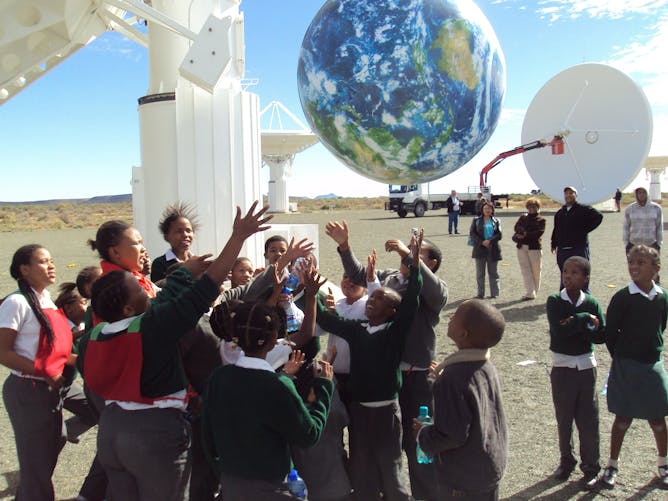|
Senior politicians and scientists will gather near a small dusty town called Carnarvon in South Africa today to officially unveil the 64-dish MeerKAT array. This will be the largest and most sensitive radio telescope in the southern hemisphere until the Square Kilometre Array (SKA) is completed. Vanessa McBride explains why big occasions like these - and smaller but equally important projects that harness the power of astronomy for improving the world - are so crucial.
Researchers want to understand what drives people to share fake news, and how endorsements can help spread false articles on a social network. But most models that try to mimic the spread miss the richness of human learning and interactions. Co-Pierre Georg, Christoph Aymanns and Jakob Foerster describe how they used artificial intelligence to study how support for - or opposition to - a piece of fake news can spread within a social network.
|

School children at the site of the KAT-7 radio telescope in Carnarvon, South Africa.
Kevin Govender
Vanessa McBride, International Astronomical Union's Office of Astronomy for Development
Astronomy is accessible to anyone with a view of the sky.
|

Technology drives fake news. Could it also stop the problem in its tracks?
Shutterstock
Co-Pierre Georg, University of Cape Town; Christoph Aymanns, University of St.Gallen; Jakob Foerster, University of Oxford
We used the latest techniques from artificial intelligence to study how support for or opposition to a piece of fake news can spread within a social network.
|
Politics + Society
|
-
Steven Friedman, University of Johannesburg
The problem with South Africa's governing ANC, is that to many of its members, politics is not about public service but about resources.
|
|
Health + Medicine
|
-
Sara Nieuwoudt, University of the Witwatersrand
Health workers promote exclusive breastfeeding to HIV positive mothers more than they do to mothers who are negative.
|
|
From our international editions
|
-
Brett Bryan, Deakin University; Lei Gao, CSIRO
After cascading ecological catastrophes in the 90s, China spent 20 years seriously investing in sustainability. Now that effort is paying off.
-
Michael Smith, Northumbria University, Newcastle
A new study shows that writing about positive experiences for 20 minutes a day can reduce stress and anxiety.
|
|